Qatar treads water
Climate change makes sea levels rise, posing increasing risks to the peninsula

The sun rises over the Arab Gulf, illuminating the historic fishing village of Simaisma with hues of yellow and orange. Located in the Al Khor district of Qatar, some 30 kilometers north of Doha, the coastline is dotted with short, stubby mangrove trees wrestling the wind and waves.
Adrian Alfaras wakes up at 4 a.m. once a week and makes the journey to Simaisma Beach to pursue his lifelong hobby and passion: fishing. As the waves wash over his boots, he makes his way into the chilly water up to his waist. He casts his baited line into the gulf and waits. Now in his 30s, Alfaras has been fishing since he was 11 years old.
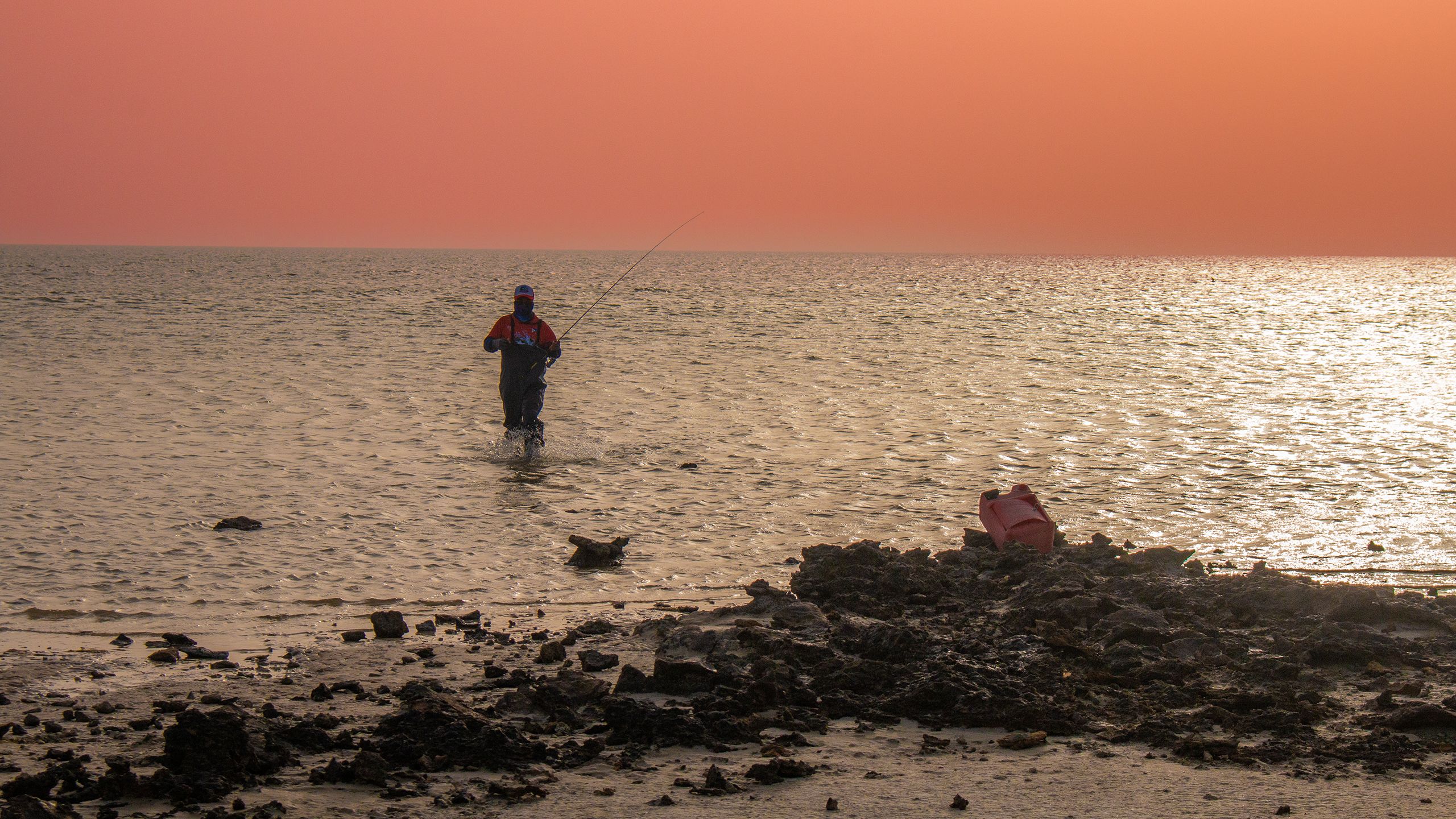
“As a child, I first went fishing with my lolo [grandmother],” Alfaras reminisces about his boyhood in the Philippines. “I caught a catfish, and it made me really excited.”
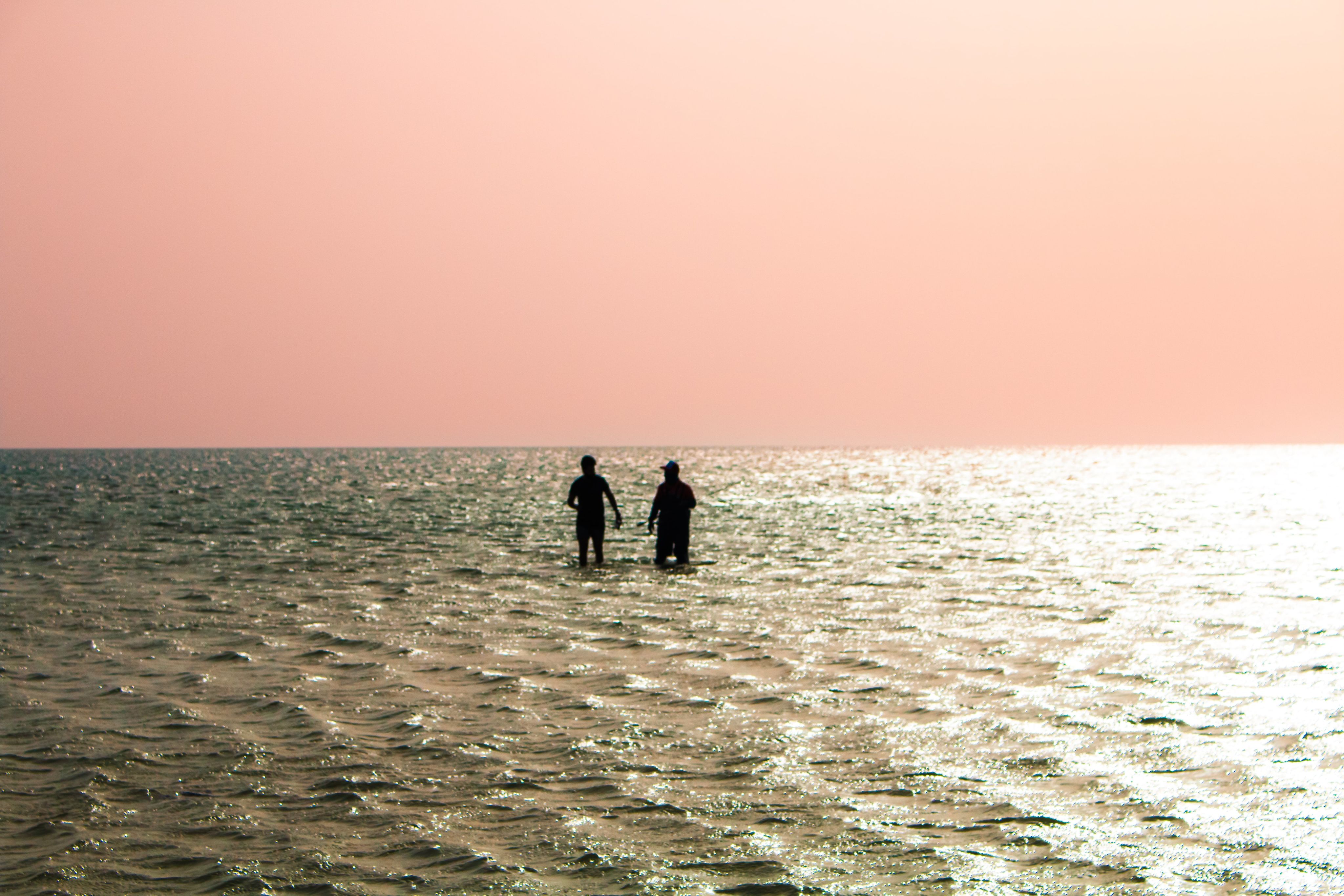
More than two decades later, Alfaras spends his free time shore-fishing in the shallow waters in Al Khor or at Khawr al Udayd, also known as the Inland Sea, an inlet of the Arab Gulf in southeast Qatar. He is the founding member of the Anglers of Qatar, which brings amateur fishing enthusiasts together to spend weekends at the shore.
As the impacts of climate change gradually become more apparent, Alfaras often wonders if future generations will be able to enjoy fishing along the pristine Simaisma shore as he and the Anglers do.
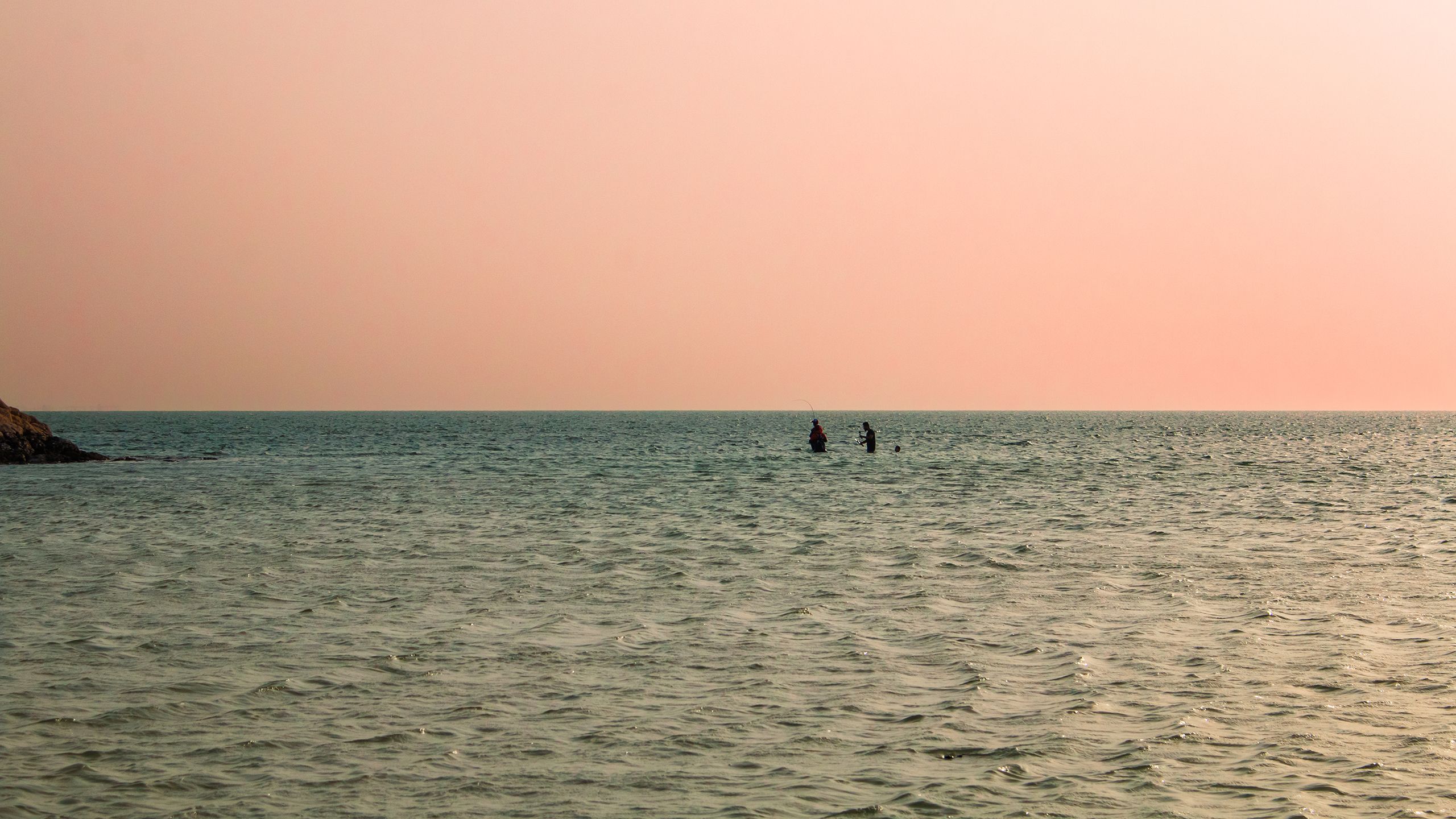
“Here, you need to fish by season. The fish leave in the winter and come back after the first week of March,” Alfaras explains. “If the climate changes and sea levels rise, the fish will not come near the shoreline, since the weather will be too extreme. They will go to tropical regions.”
Average temperatures have been on the rise around the world since the 1980s, affecting weather patterns and causing disruption. There is scientific consensus that extreme weather events such as heat waves and powerful storms are likely to become more frequent and/or more intense due to human-induced climate change.
Alfaras moved to Qatar in 2019 to take a job as a government employee, and he and the Anglers are already seeing impacts on their hobby. “There used to be a lot of fish here before,” says Allen Datuin, who is also from the Philippines and has been fishing with Alfaras for three years, “but now there are much less. Some of this is due to the big fishing boats, and maybe some is due to climate change as well.”
Sometimes the Anglers fish for three or four hours and then bring home the fish to fry, Alfaras says as he reels in a sea bream. Other times they have on-site picnics. On this crisp Friday morning, Alfaras and Datuin fish while their families relax on the beach near an abandoned building, listening to music and enjoying the Qatari sunshine. Others on the beach set up grills to barbecue their catch. “I feel excited to hold the rod and feel the fish tugging on the line,” Alfaras says. “This is going to be my hobby until I am too old to do it anymore.”
The younger generation is also hooked, even though how they will be able to fish in years to come may be different.
Datuin’s 8-year-old son, Liam, swims nearby, dunking himself under the water every so often. Like his father, he says he enjoys fishing and remembers catching a sea bream once, then dives back in.
Sea levels rising
Bordered by the Arab Gulf to the west, north and east, Qatar historically has drawn its economic life from the water, relying on the pearling and fishing industries for centuries before natural gas was discovered within a year of the country’s independence in 1971.
Today Qatar is staring blankly at its biggest challenge yet: rising sea levels induced by climate change. Although Qatar is some 2,000 kilometers northwest of the Arabian Sea, its rising level, in turn, affects the waters of the Arab Gulf in a similar fashion.
“Sea-level rise is the rise of the average level of the sea surface,” says Radhouan Ben-Hamadou, an associate professor of marine sciences at Qatar University in Doha. “It is caused by an increase in the volume of the water in the world’s oceans.”
Sea levels around the world are rising by around 3 to 4 millimeters a year, according to the World Meteorological Organization, which reported in January that the average global temperature in 2021 rose to about 1.1 degree Celsius above pre-industrial (1850-1900) levels for the seventh consecutive year since 2015. Since the 1880s, global mean sea level has risen about 8-9 inches, or approximately 20-23 centimeters, with about a third of that occurring in just the last two and a half decades.
“This is important, because if we slow down climate change, we can also slow down potential [rise in] future sea levels,” says Sophie Crooks Nowicki, geology professor at the University of Buffalo and an internationally recognized expert on global climate change. “Sea level is a global problem – everyone is affected by it one way or another, so we should all do our best to try to minimize future sea-level change.”
Rising global temperatures cause sea levels to rise in two ways. First, increased melting of ice sheets on mountain glaciers and ice caps at the North and South poles results in greater ocean runoff, which increases the volume of water in the Earth’s seas and oceans.
However, the main cause of rising levels is the thermal expansion of the water, Ben-Hamadou explains. Rising global temperatures in turn raise the temperature of sea and ocean waters. According to the principle of thermal expansion, most matter expands when heated and contracts when cooled. “The increase in the temperature of the water increases the distance between molecules,” he says. The molecular increase increases the water volume, causing levels to rise.
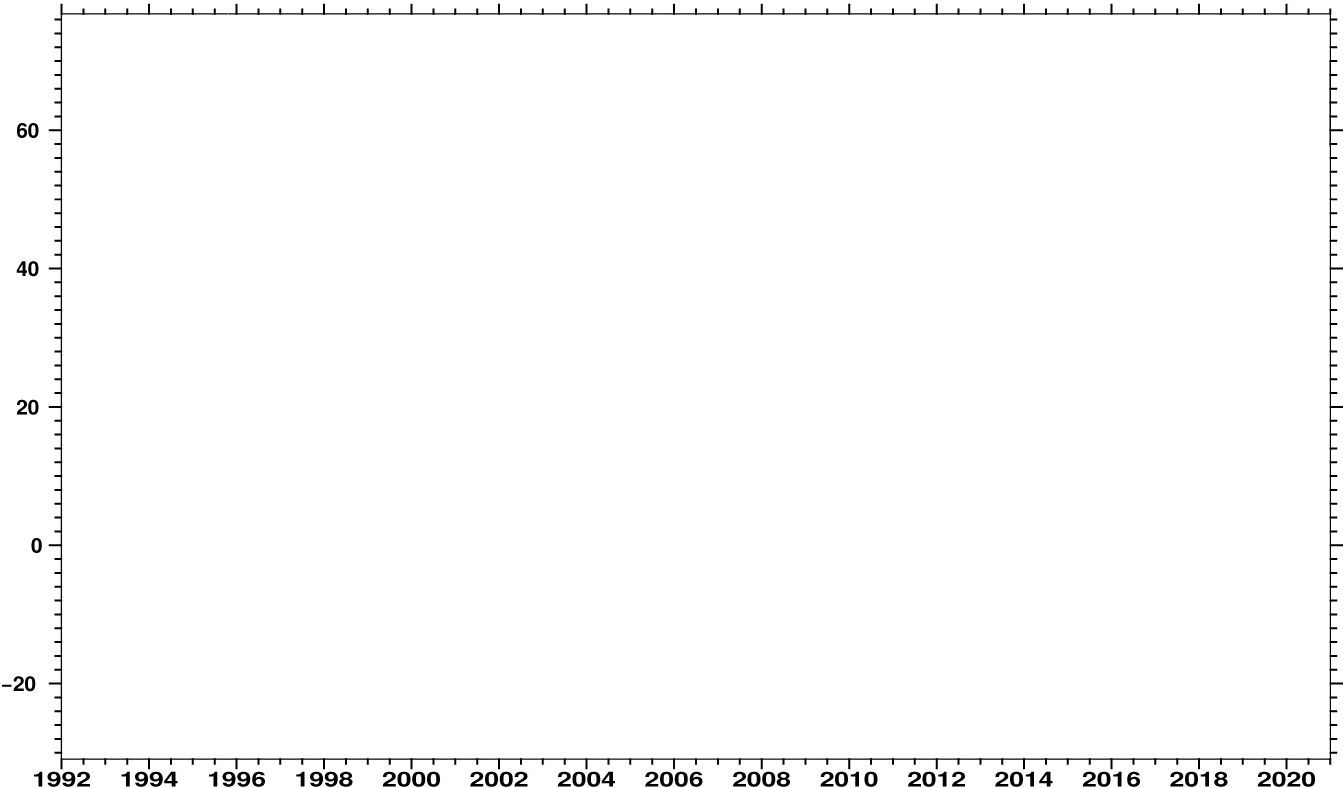
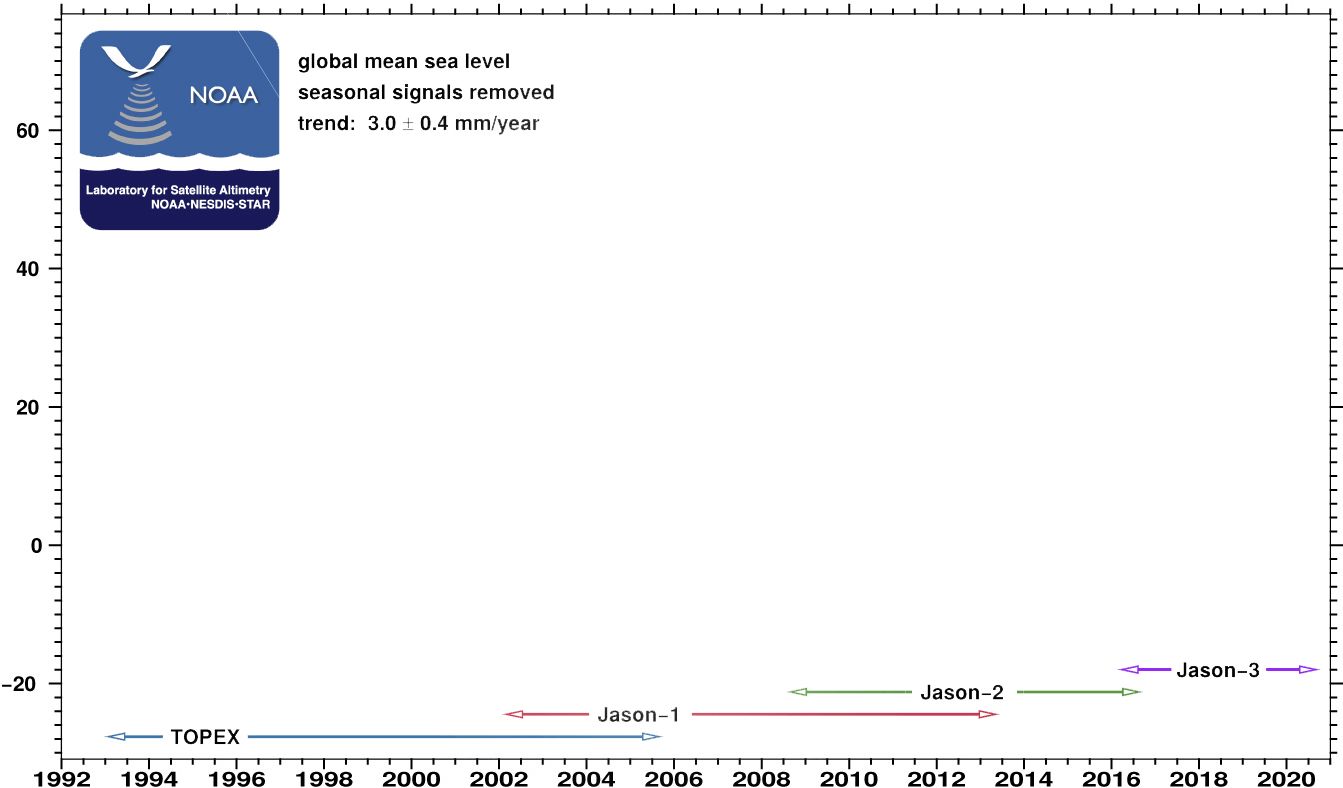
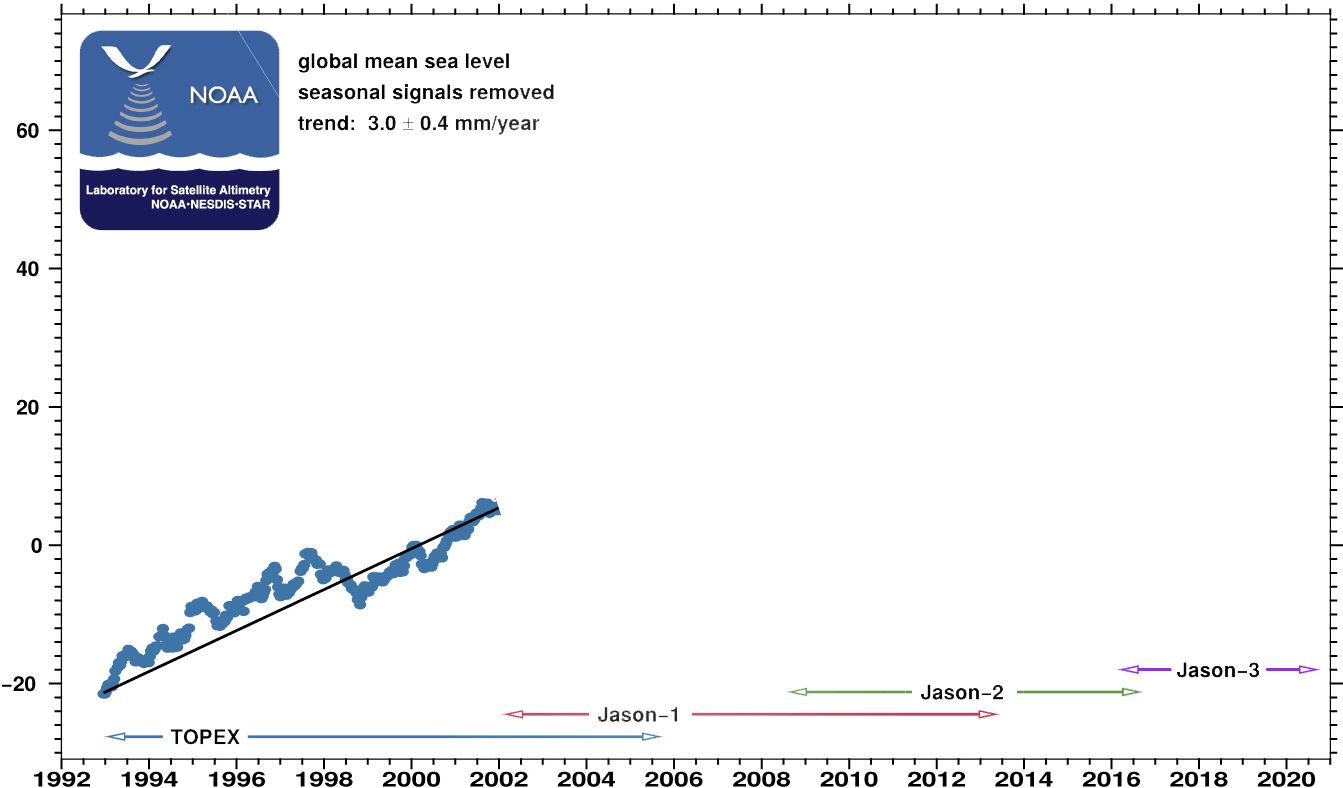
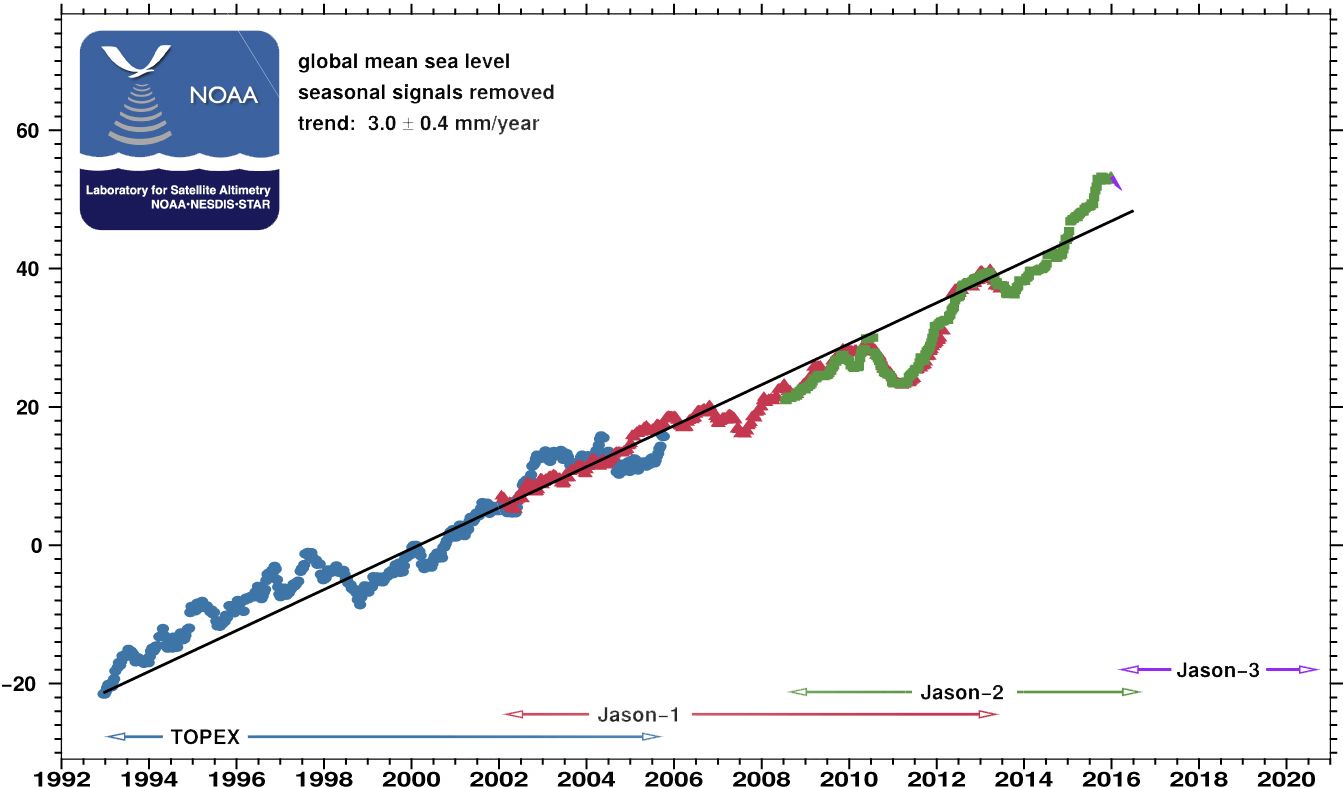
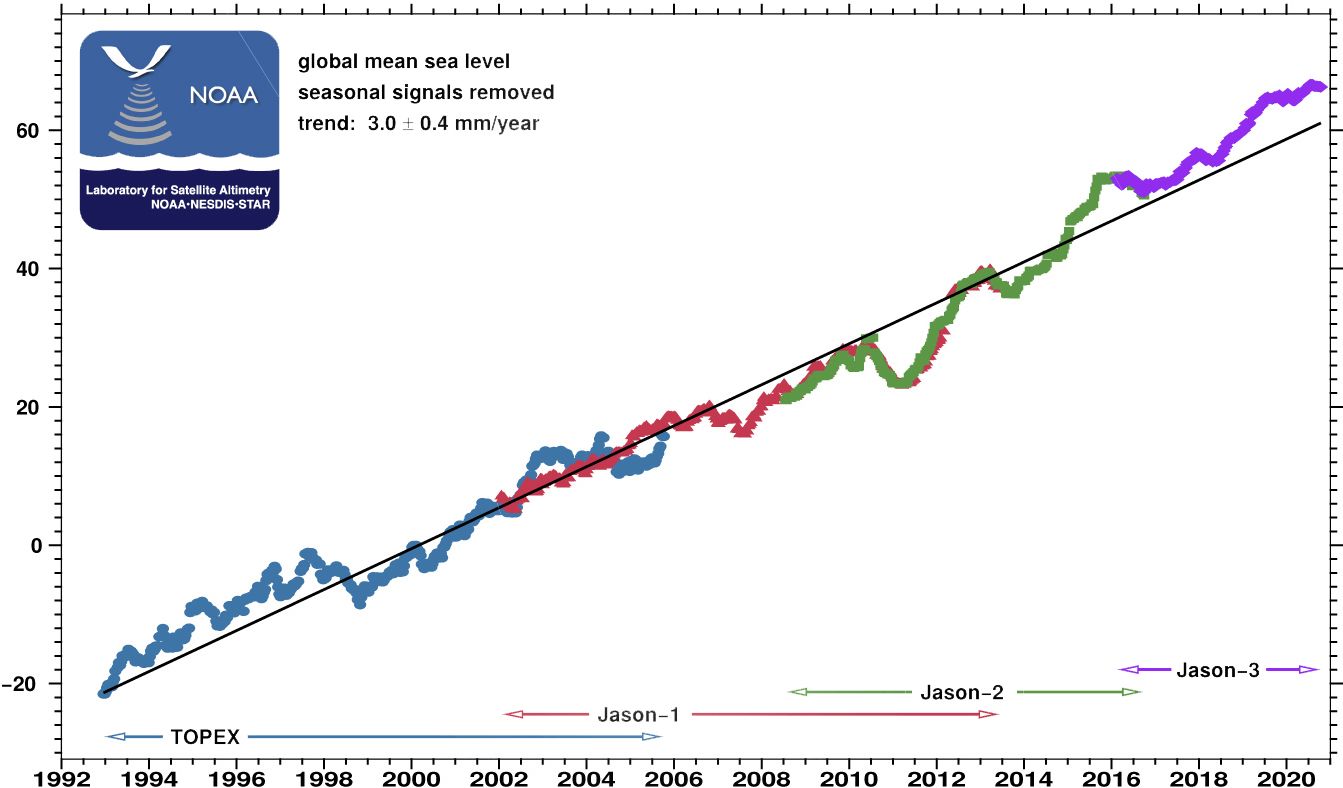
Impacts on Qatar
Rising sea levels have the greatest impacts on coastal regions, and Qatar is extremely vulnerable to sea-level rise, according to the Nationally Determined Contribution that the country submitted to the United Nations Framework Convention on Climate Change in August 2021.
“The impact of sea-level rise that we see in the world today is more frequent coastal flooding,” Nowicki explains. “There will also be more extreme events like hurricanes that lead to flooding too.”
Scientists expect these impacts to pose greater risks across the globe as human-induced climate change continues to accelerate. “These will increase in the future because the Earth’s temperature is increasing,” Nowicki adds. “So the sea level will continue to rise due to thermal expansion and more water from melting ice.”
According to Ben-Hamadou, major impacts on Qatar of the sea level-related rise in Arab Gulf waters will likely include flooding along coastal areas, cyclones (hurricanes) and diminishing of marine ecosystems including habitats for mangrove vegetation and coral reefs surrounding the peninsula.
Among Middle Eastern and North African countries, “Qatar is the most vulnerable to sea-level rise and associated flooding,” according to the climate change strategy report by the country’s Ministry of Municipality and Environment. A 1-meter rise in sea level, which is predicted to happen by the year 2100, would affect 3 percent of Qatar’s total land area, and a 3-meter rise would affect 8 percent. “Models for the rise in sea level have been changing for the past three decades,” according to Yousra Soliman, associate professor of biological and environmental sciences at Qatar University. “The sea level is rising at a faster rate than what we predicted before.”
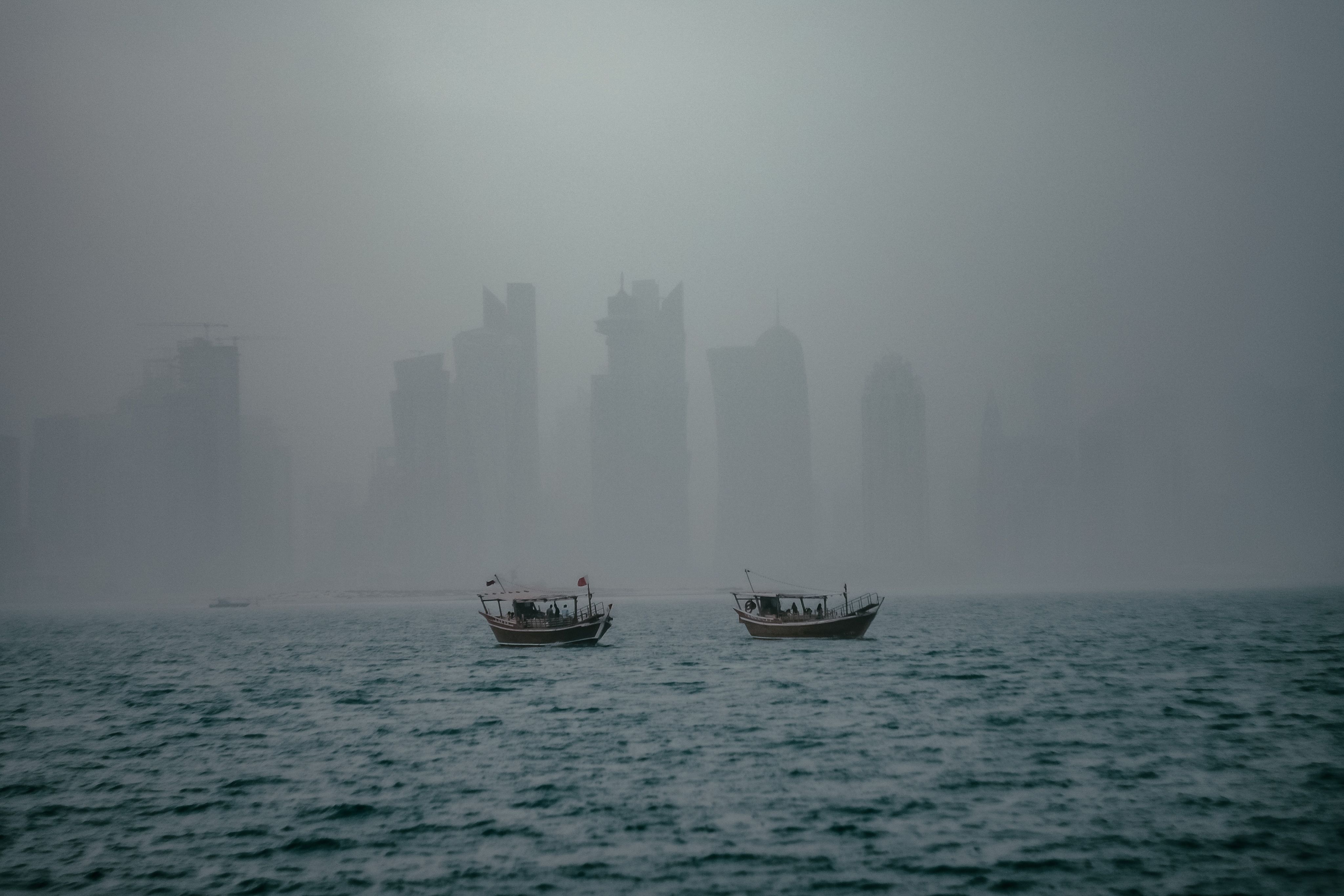
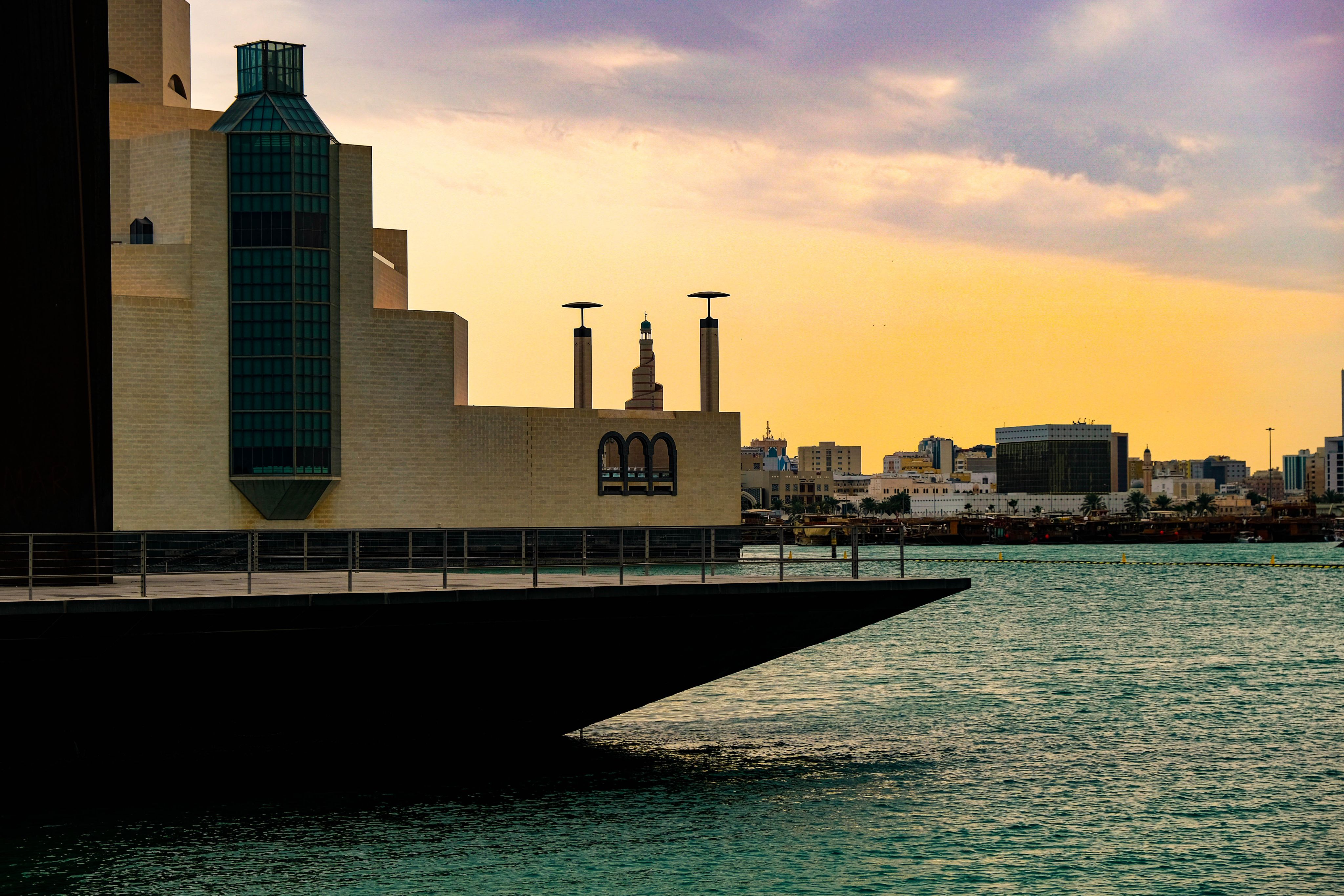
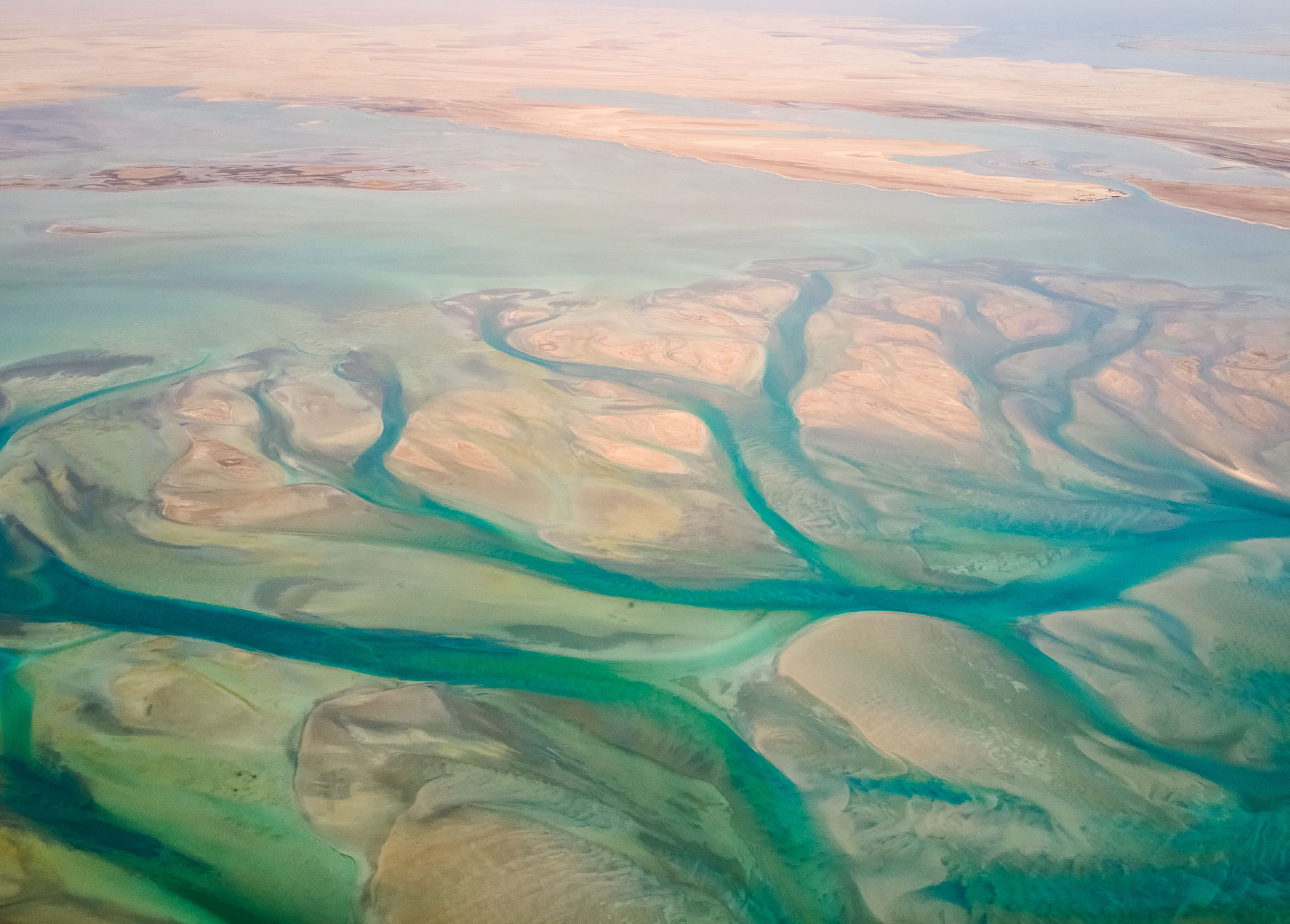
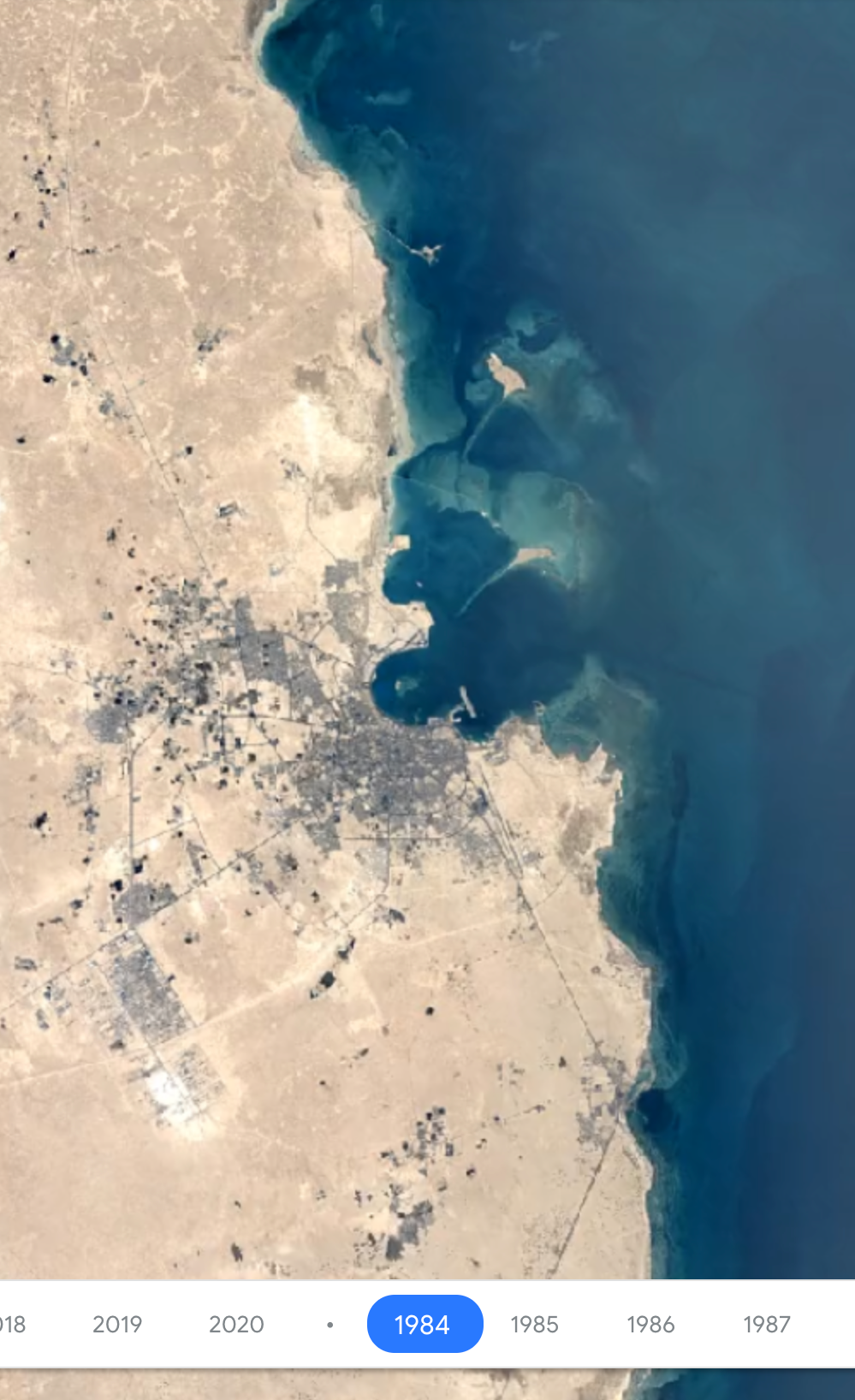
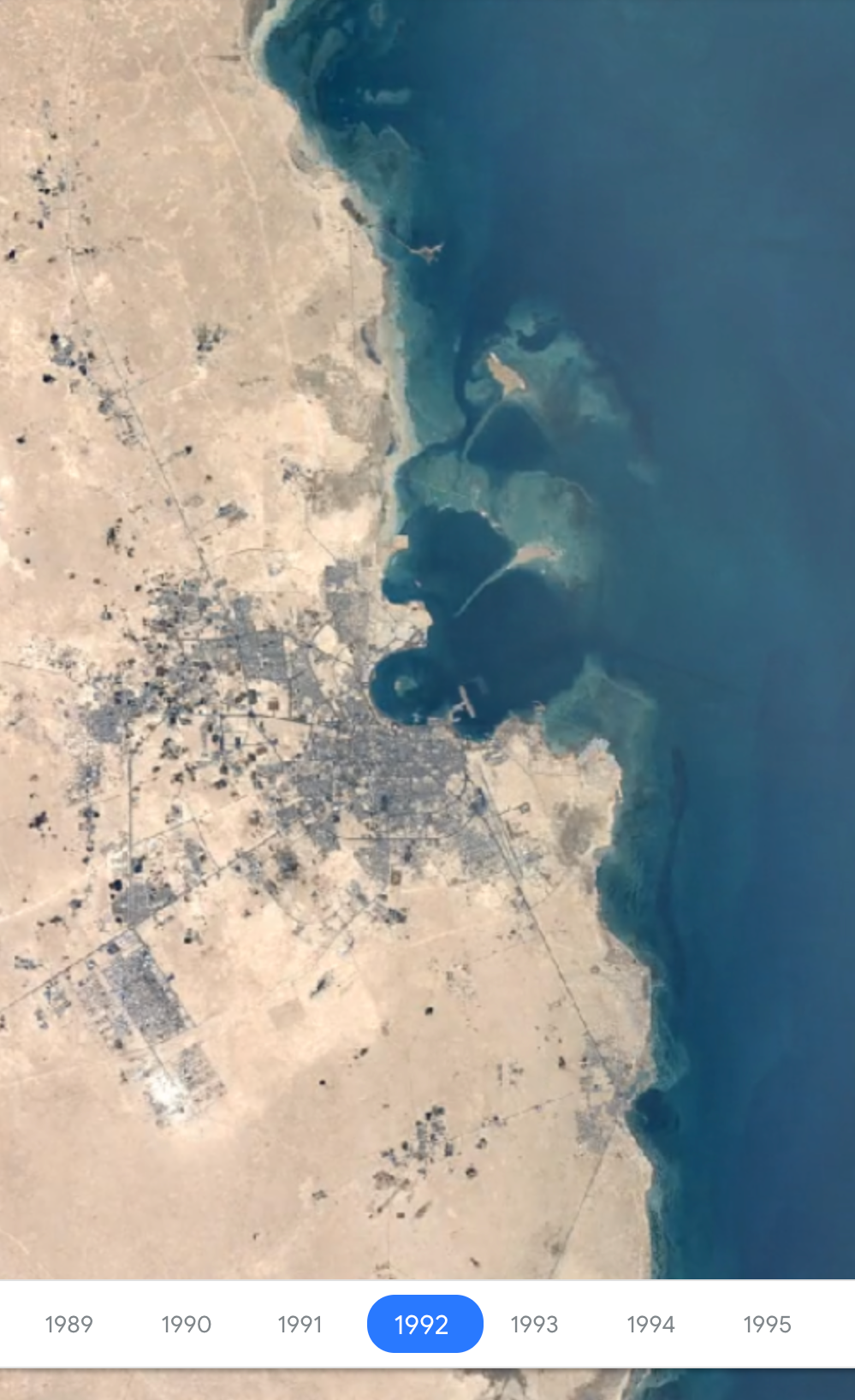
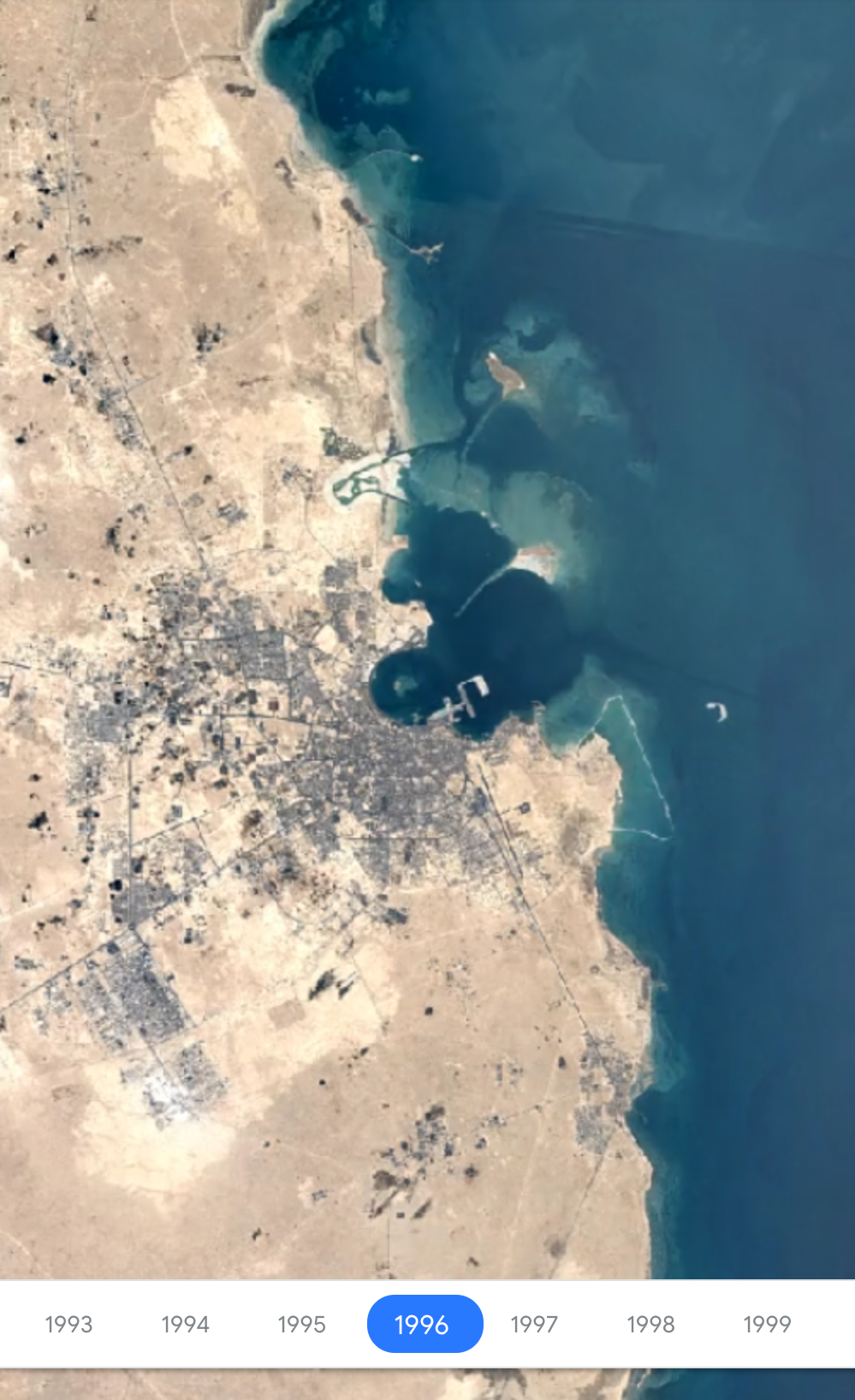
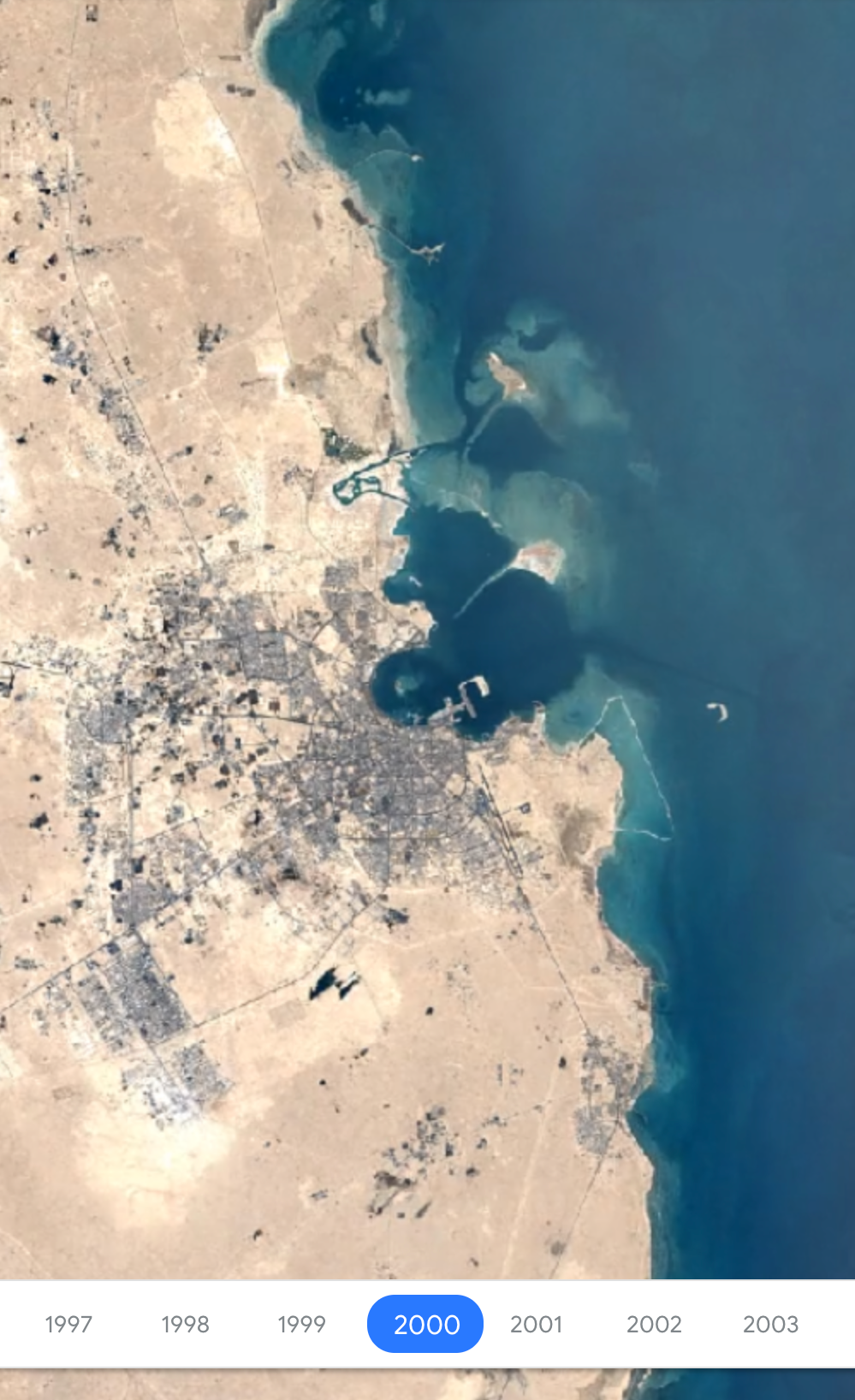
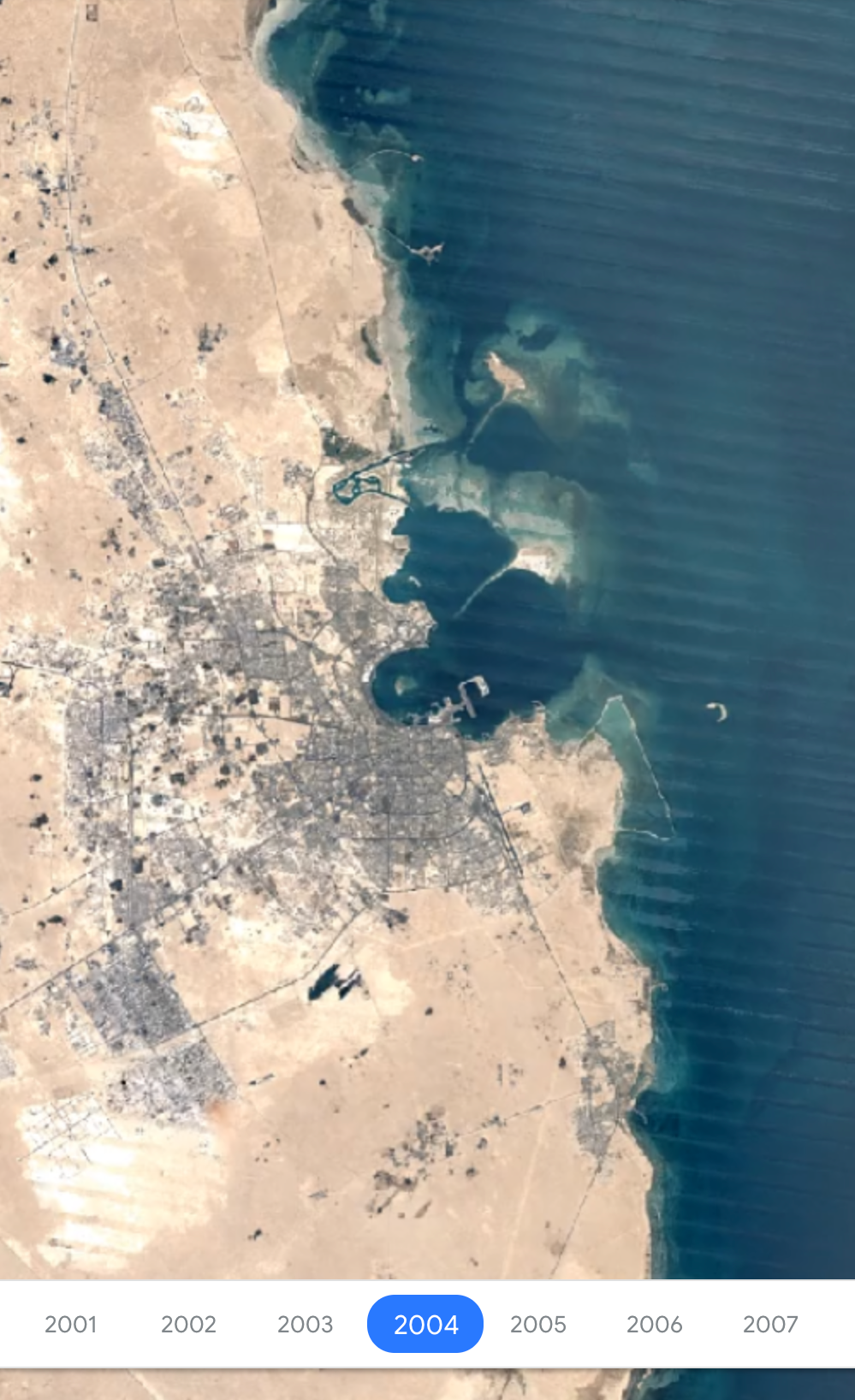
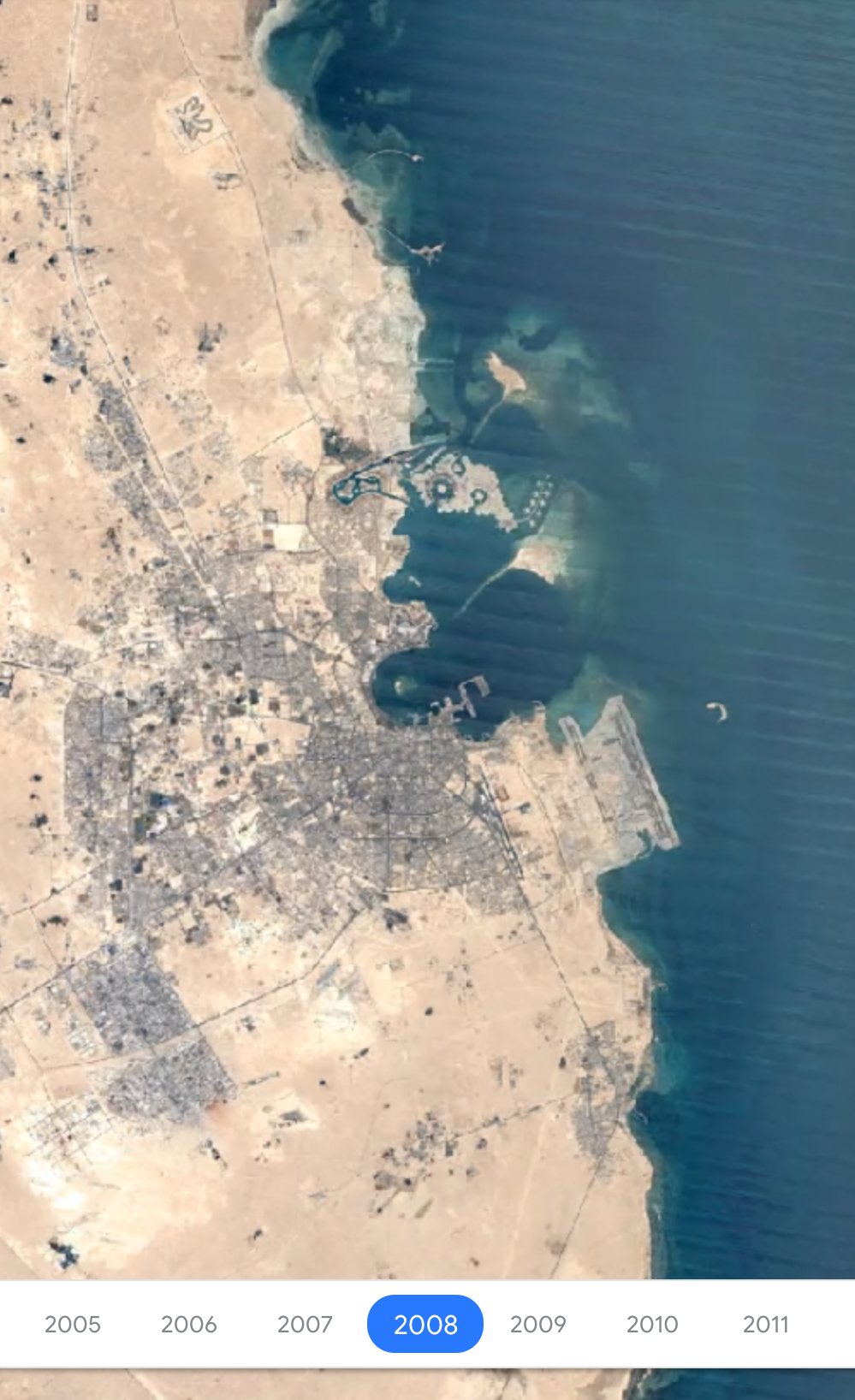
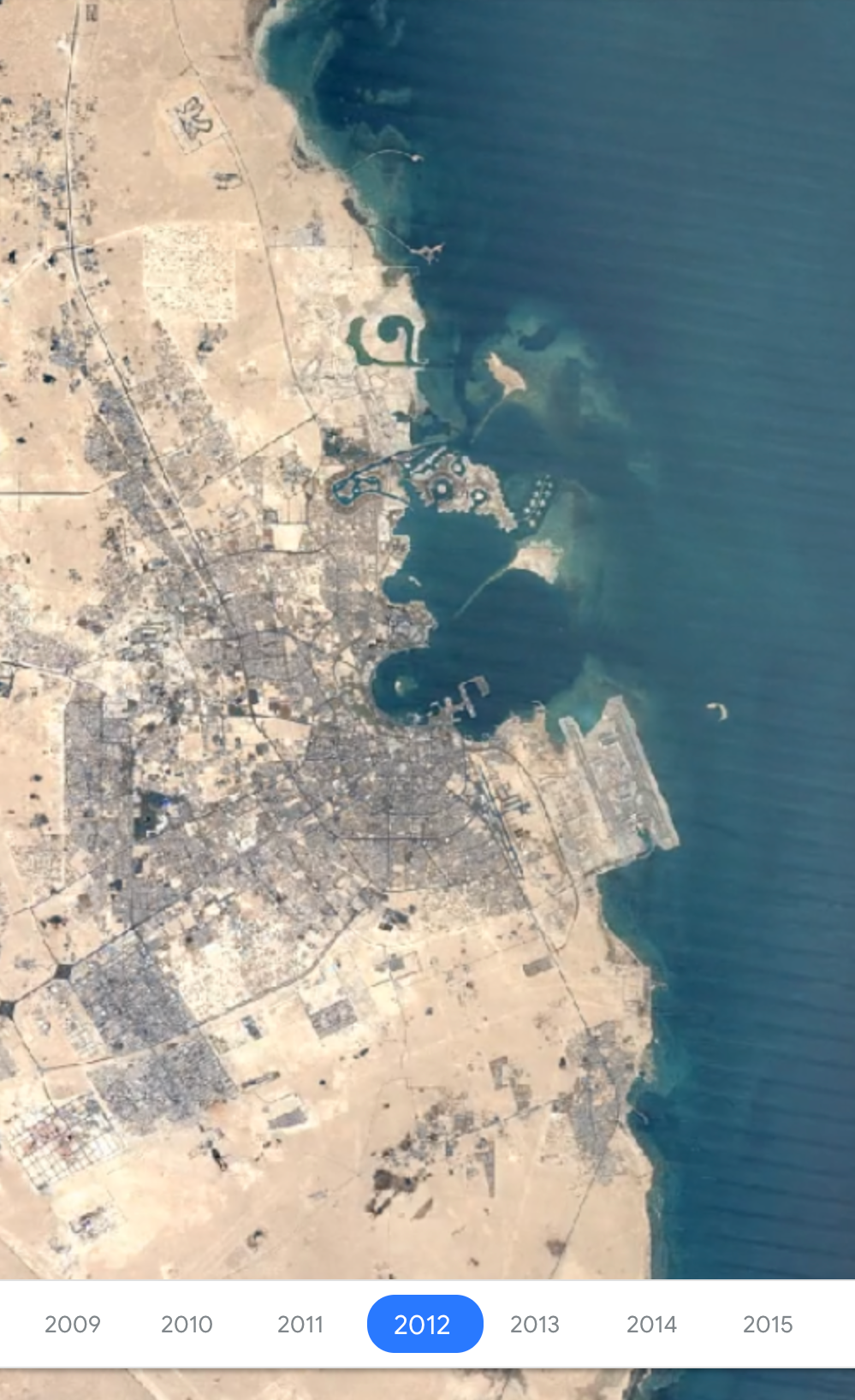
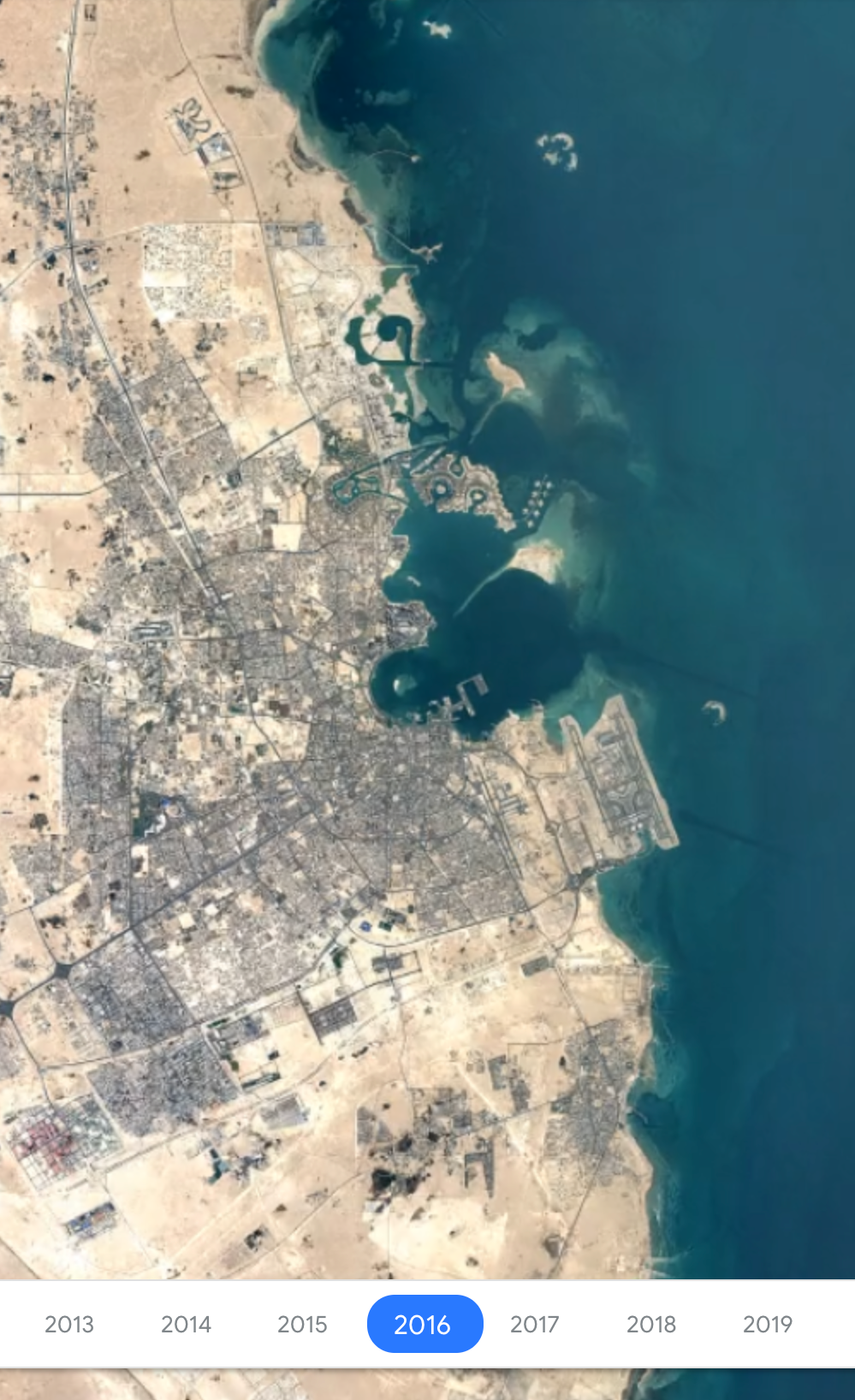
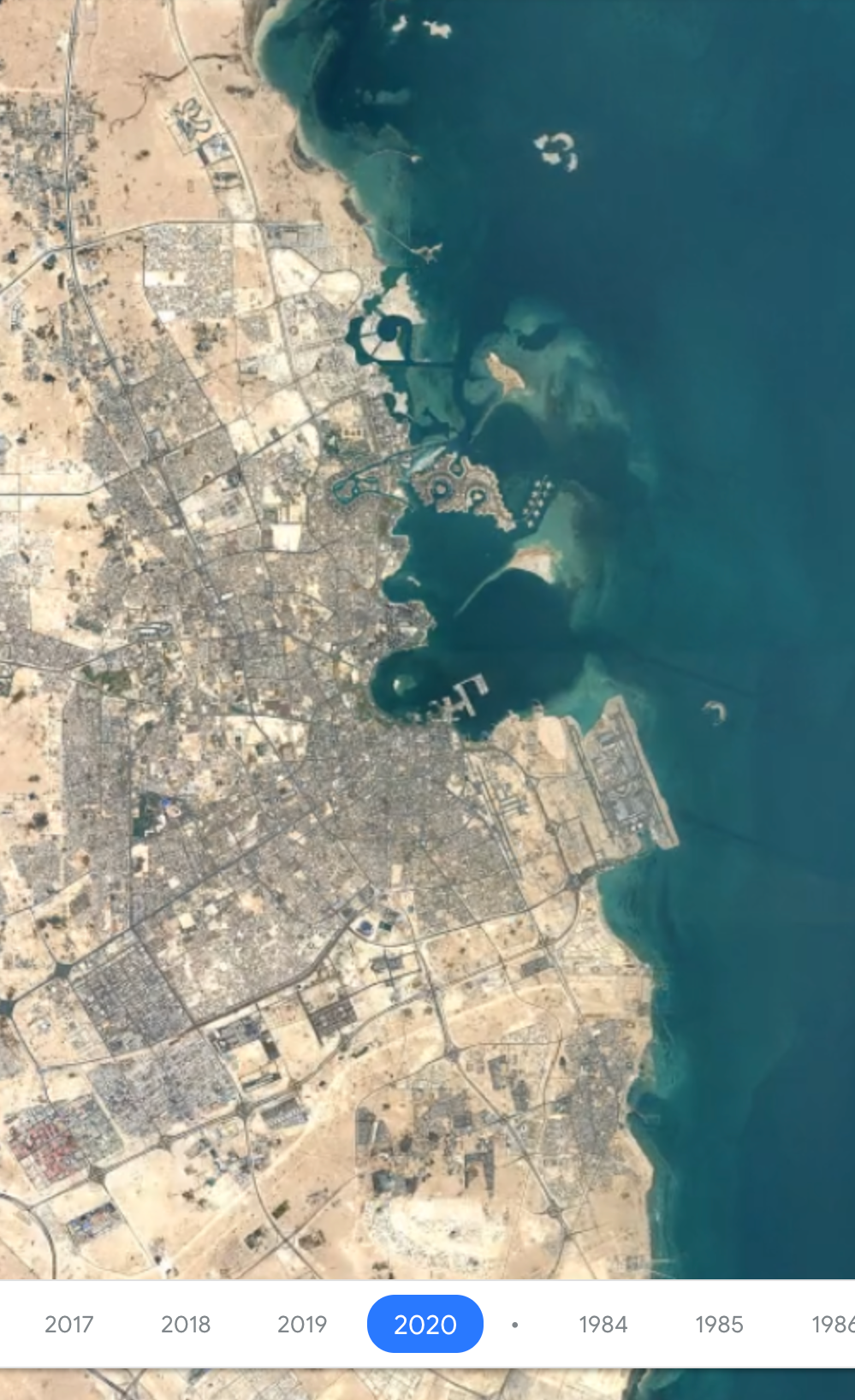
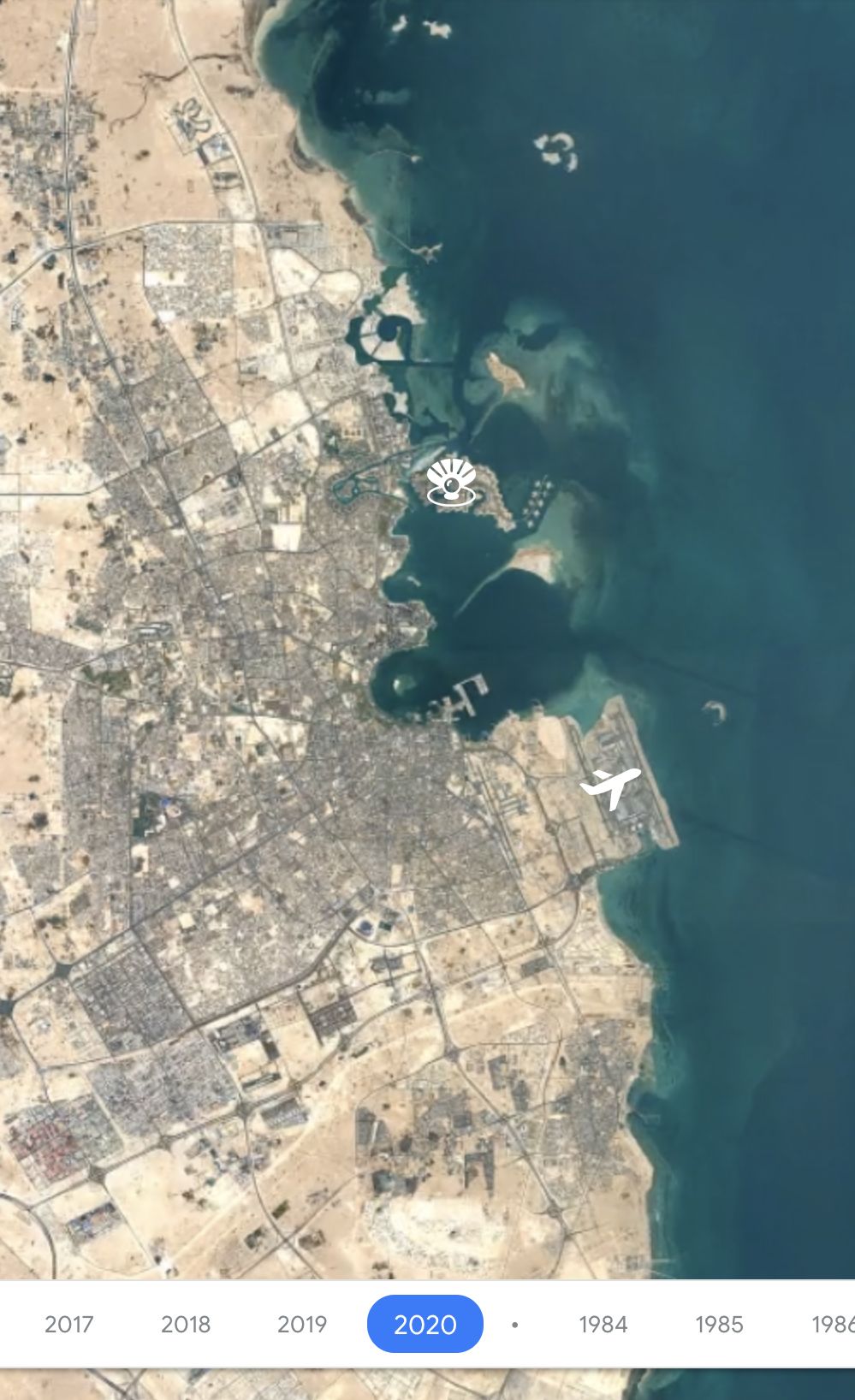
Among the hardest-hit areas of the country will be the coastal capital city of Doha, home to around 92 percent of Qatar’s 2.9 million population, and its environs. Doha stands on average just 3 meters above sea level, with many coastal areas near sea level. Seaside districts of Doha include Al Dafna, one of the city’s main business centers; the cultural village of Katara; and the Pearl, a 14 square-kilometer artificial island reclaimed from the gulf and site of some of the country’s most expensive real estate, packed with luxury apartment buildings and high-end shops and restaurants. Lusail, a planned coastal city 14 kilometers north of Doha with ongoing construction, will feature a mix of luxury residential housing, hotels, marinas, and shopping and entertainment districts.
Doha’s Hamad International Airport, a regional transportation hub opened in 2014 that accommodates nearly 360,000 international flights annually, fares a little better at 4 meters above sea level. However, built on land reclaimed from the gulf – all such reclaimed land is vulnerable to erosion caused by waves – the airport will face tough challenges in the decades to come as the surrounding water level rises.
These and other coastal areas throughout Qatar will face flooding, and offshore power and water co-generation facilities, as well as oil and natural gas infrastructures, will be directly impacted. Ras Laffan, an industrial city 80 kilometers north of Doha, is administered by Qatar Petroleum and is the country’s main production site for liquified natural gas, the burning of which contributes to climate change. The area is expected to be one of the worst affected by rising sea levels in the coming decades. “The projections show that Ras Laffan would be completely submerged in the water by the end of the century,” Ben-Hamadou says.
Climate change will also impact Qatar’s marine ecosystems, in particular mangrove forests on the northeast coast of the peninsula in Al Khor and Al Dhakhira, home to gray and white mangrove trees of the avicennia marina species common in Arab Gulf countries. Mangroves play an important role in fighting climate change, Soliman says. “These blue carbonic systems are highly productive ecosystems and can capture carbon and preserve it for thousands of years,” she notes of the mangrove forests, which are considered a nature-based solution for climate change because they can absorb around 50 times more carbon than a tropical forest in the same area.
Mangroves also provide a sheltering habitat for birds, fish and mammals during the long, harsh Qatari summers, which routinely exceed 45 degrees Celsius. However, mangrove forests are being pushed further inland as sea levels rise. “The mangroves need to have a specific range because they are in the intertidal zone, the zone between the high-tide level and the low-tide level,” Ben-Hamadou explains. However, the increase in the highest wave loop forces the mangroves toward land, where construction in coastal areas impedes their habitats not only in Qatar but also in the UAE, Bahrain and Saudi Arabia, according to UNESCO. “Losing habitat is losing all that biodiversity and the biomass that is associated with those habitats,” Ben-Hamadou says.
A 2015 study produced at Qatar University on the vulnerability of mangroves due to sea-level rise in Qatar shows that 35 percent of the mangroves in Al Khor and Al Dhakhira will be affected by a 0.52-meter sea-level rise, and 45 percent will be affected by a 0.74-meter sea-level rise. “Their growth rates relative to the sea-level rise is one thing that scientists are trying to understand,” Soliman says. “Will they be successful, and keep up with the rising water – or will they go underwater and disappear?”
Qatar takes action
The impact of the sea-level rise is proportional to the magnitude, vulnerability and exposure of hazards, Ben-Hamadou explains. With many of its industrial facilities and major cities along the coastline, and with population density higher in coastal areas, Qatar faces significant exposure to rising sea levels. “You cannot reduce the exposure because you are in the coastal zone, so you need to reduce your vulnerability. And this is where, mainly, climate-change adaptation measures happen,” Ben-Hamadou says, adding that mitigation methods include engineering physical barriers to stop water from flooding the coastlines and elevating some infrastructural areas.
The Qatari government has already begun to take practical measures in Ras Laffan, and Qatar Energy, which administers the industrial city of Mesaieed in the Al Wakra municipality 38 kilometers south of Doha, is planning to elevate land there, according to Ben-Hamadou. Mwani Qatar, the company that administers the country’s ports, is also considering elevation measures to reduce the impact of the rising sea levels, he adds.
On the national level, the Nationally Determined Contribution that Qatar submitted to the United Nations climate-change treaty states that the government aims to reduce the country’s carbon emissions 25 percent by 2030. With the Qatari economy heavily reliant on non-renewable natural gas and oil resources, the NDC emphasizes the need to move toward a more sustainable future.
The Qatar National Vision 2030 pledges a proactive and significant regional role in assessing impacts of climate change and supporting international efforts to mitigate them, and local public and private sustainable-development initiatives include LEED-certified infrastructure; recycling and reusing construction waste and funding related research; and increasing public awareness about climate change.
In the Doha region, newly developed urban areas such as Lusail and Msheireb are engineered to boost environmental sustainability by limiting energy consumption. The district cooling system for Lusail is designed to save 65 million tons of carbon-dioxide emissions annually, and Msheireb has been designed to reduce traffic congestion and the need to use private cars as well as water consumption.
On the global level, at the 2021 UN Climate Change Conference in Glasgow, Sheikh Faleh bin Nasser bin Ahmed bin Ali Al Thani, minister of environment and climate change, said Qatar supports world response to climate change and announced that the country will contribute $100 million to support small-island developing states and least-developed countries in tackling climate change and related environmental challenges.
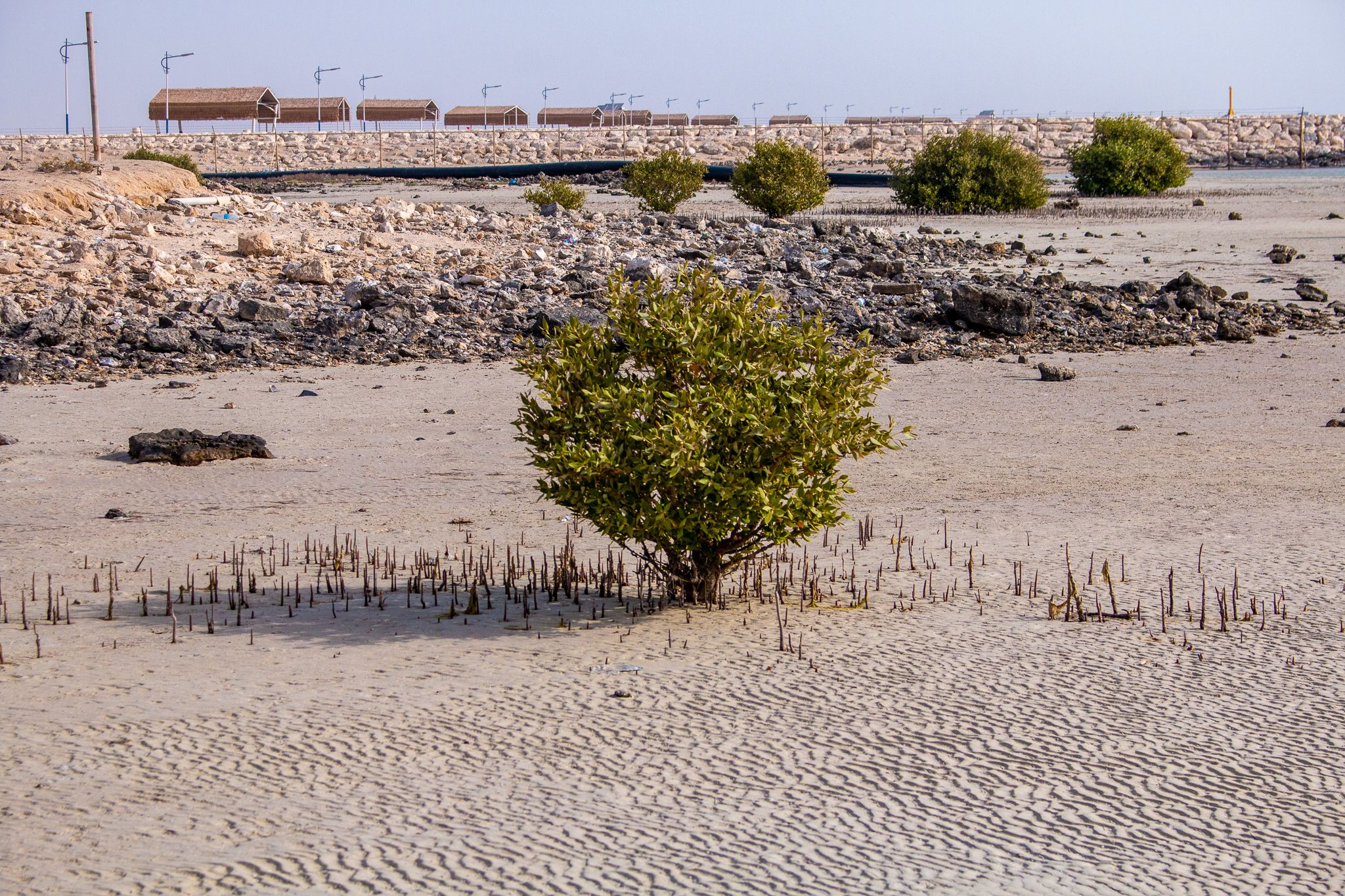
It takes a global village
Sida Lai, 21, a Chinese student who has lived in Qatar for the past four years, started deep-sea diving at the end of 2021 and has earned a certificate as a 30-meter diver. On free days he wakes up around 7 a.m. to head to Sealine Beach, about 50 kilometers south of Doha, to dive in the Arab Gulf.
On each trip he usually does two or three dives of 40 minutes each, reveling in the variety of marine creatures he takes in. Despite his enthusiasm, though, Lai thinks about the impact that climate change could have on his hobby. At Sealine, he goes to the GMC diving site, where old cars have been positioned underwater as shelters for fish and other sea life. “Coral reefs are very susceptible to temperature change in the water, and rising temperatures with global warming could disrupt the coral reefs and the creatures that depend on them for survival,” he says.
As impacts of climate change become increasingly more apparent, posing threats to marine life, ecosystems and humans alike – and even with Qatar taking systematic steps to reduce the peninsula’s carbon footprint – a collective effort by individuals and governments alike is needed to confront the threats of climate change, Ben-Hamadou says.
“It is the responsibility of everyone, not only governments, decision makers and international institutions. It is also our own responsibility to take action to reduce our own environmental footprint, [to consider] how we are using resources and how we are dumping waste.”
Saad Ejaz, 23, a resident of the West Bay district in Doha, runs along the Corniche in the mornings. Ejaz, a Pakistani film-maker who has lived in Qatar for five years, says he is trying to do his part to be more environmentally conscious by following news about climate change and altering aspects of his daily routine.
“I have tried to limit my carbon footprint by using the Metro more often than Uber,” Ejaz says. “Running along the Corniche and watching the waves crash on the rocks reminds me that the future is uncertain, and we are all responsible for protecting it.”
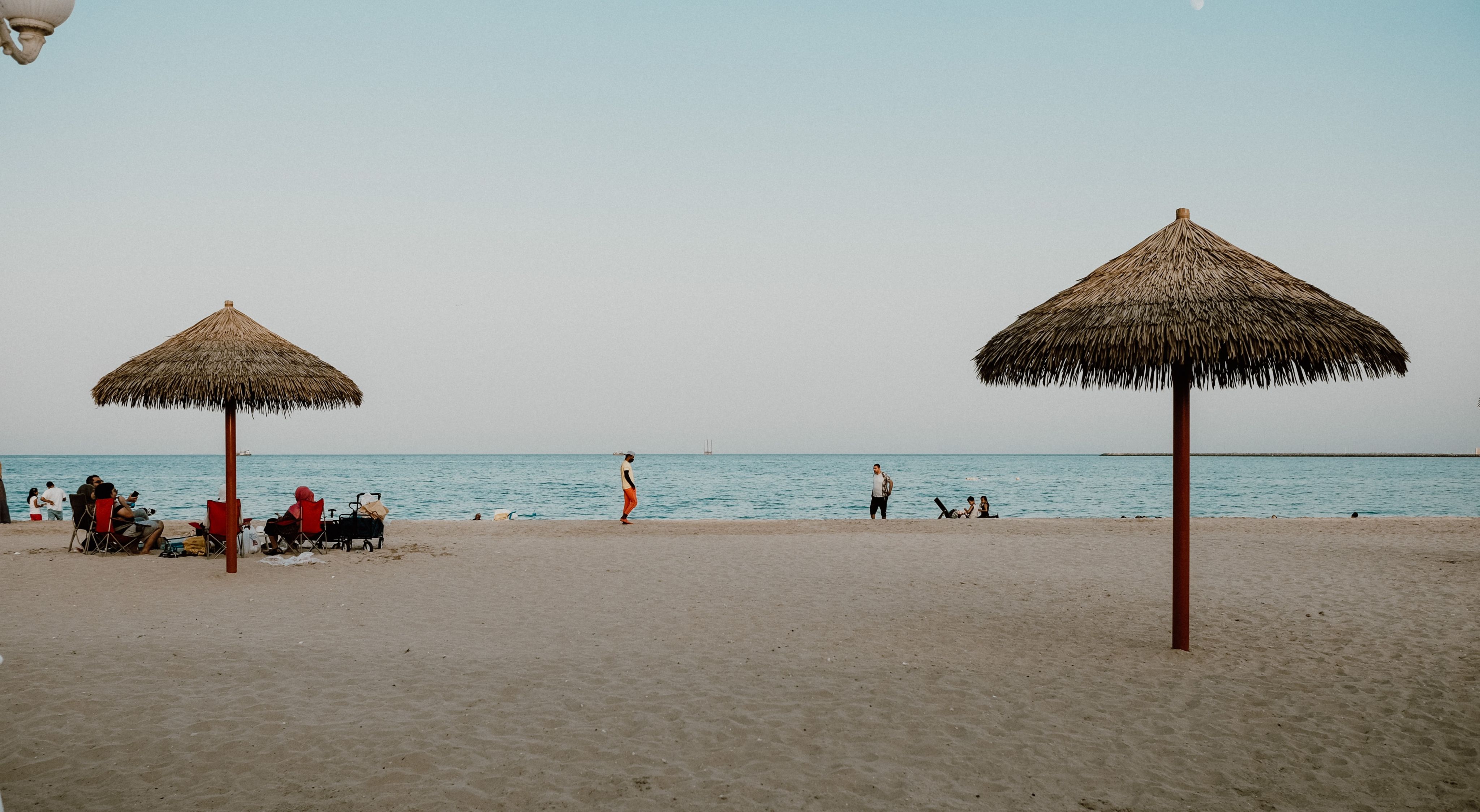
_______________________
GRAPHICS CREDITS
NOAA graph/https://www.climate.gov/maps-data/dataset/global-mean-sea-level-graph
Radhouan Ben-Hamadou presentation (slider)/ https://coastal.climatecentral.org/redirect/choices/index.html#7/30.529/46.796?compare=scenarios&carbon-end-yr=2100&scenario-a=unchecked&scenario-b=extreme-cuts
Stop-motion time-lapse map of Qatar/earthengine.google.com
Qatar satellite map/https://goleaddog.com/gis-data-products/satellite-maps/satellite-maps-index/qatar-satellite-maps/
Doha photos/https://unsplash.com/license
Qatar photos and videos of Arab Gulf and beaches/Muhammad Abdullah Imran Tahir, abdullahimrantahir.com